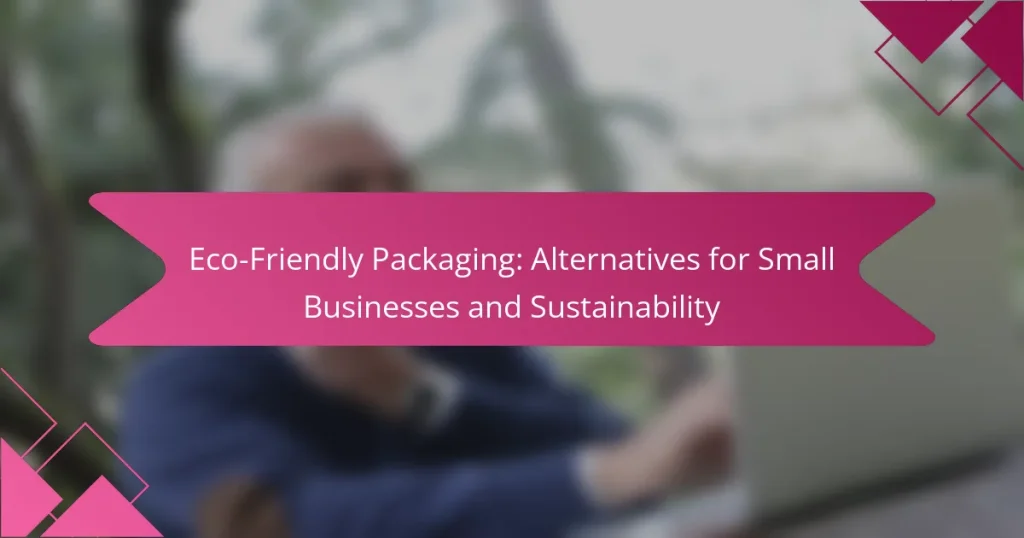As small businesses strive for sustainability, adopting eco-friendly packaging options is essential for reducing environmental impact while ensuring product safety. By exploring alternatives such as biodegradable, recyclable, and compostable materials, businesses can align their practices with eco-conscious consumer values and enhance brand loyalty. Though initial costs may be higher, the long-term benefits often outweigh the investment, leading to both savings and increased revenue.
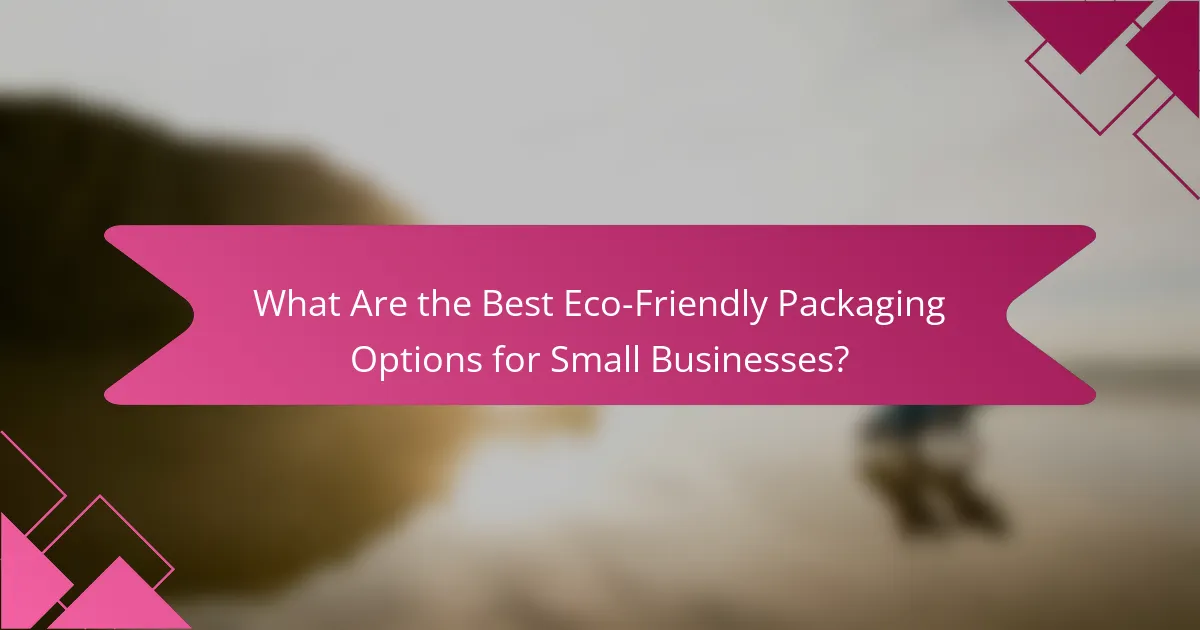
What Are the Best Eco-Friendly Packaging Options for Small Businesses?
Small businesses can adopt several eco-friendly packaging options that minimize environmental impact while maintaining product integrity. The best choices include biodegradable, recyclable, compostable, reusable, and plant-based materials, each offering unique benefits and considerations.
Biodegradable Packaging
Biodegradable packaging is designed to break down naturally over time, reducing landfill waste. Common materials include paper, cardboard, and certain bioplastics that decompose within a few months to a couple of years, depending on environmental conditions.
When selecting biodegradable options, ensure they meet local regulations and standards for disposal. Look for certifications that indicate the material’s biodegradability to enhance credibility with eco-conscious consumers.
Recyclable Materials
Recyclable packaging can be processed and reused to create new products, significantly reducing resource consumption. Materials like glass, aluminum, and certain plastics are widely accepted in recycling programs.
To maximize recyclability, avoid mixing materials in packaging and clearly label items with recycling symbols. Educating customers on proper disposal methods can further enhance the effectiveness of recyclable packaging.
Compostable Packaging
Compostable packaging is made from organic materials that can break down into nutrient-rich compost under specific conditions. This type of packaging is ideal for food products and can include items like plant-based films and molded fiber containers.
For compostable options, check for certifications from recognized organizations to ensure they meet composting standards. Providing clear disposal instructions can help customers compost effectively, supporting local composting initiatives.
Reusable Containers
Reusable containers are designed for multiple uses, reducing waste and promoting sustainability. Options include glass jars, metal tins, and sturdy fabric bags, which can be used repeatedly by consumers.
Encourage customers to return containers for discounts or rewards, fostering a circular economy. Ensure that reusable packaging is durable and easy to clean to enhance its appeal and practicality.
Plant-Based Plastics
Plant-based plastics, made from renewable resources like corn or sugarcane, serve as an alternative to traditional petroleum-based plastics. These materials can offer similar functionality while reducing reliance on fossil fuels.
When considering plant-based plastics, verify their end-of-life options, as some may still require industrial composting facilities. Highlighting the sustainable aspects of these materials can attract environmentally conscious consumers.

How Can Small Businesses Implement Eco-Friendly Packaging?
Small businesses can implement eco-friendly packaging by evaluating their current practices, sourcing sustainable materials, and training their staff on sustainability principles. These steps not only reduce environmental impact but can also enhance brand loyalty among eco-conscious consumers.
Assess Current Packaging Practices
Start by reviewing your existing packaging materials and methods. Identify items that are non-recyclable or excessive, and consider their environmental impact. This assessment helps pinpoint areas for improvement.
Consider conducting a waste audit to measure how much packaging waste is generated. This can guide your transition to more sustainable options and help set measurable goals for reduction.
Choose Sustainable Suppliers
Select suppliers that prioritize sustainability in their products and practices. Look for certifications such as FSC (Forest Stewardship Council) or Cradle to Cradle, which indicate responsible sourcing and manufacturing.
Compare the costs of sustainable materials with traditional options. While eco-friendly packaging may have a higher upfront cost, it can lead to long-term savings through reduced waste disposal fees and increased customer loyalty.
Educate Staff on Sustainability
Training your staff on sustainability practices is crucial for successful implementation. Provide workshops or resources that explain the importance of eco-friendly packaging and how it aligns with the company’s values.
Encourage employees to share ideas on improving packaging practices and involve them in the transition process. This can foster a culture of sustainability within the business and enhance employee engagement.
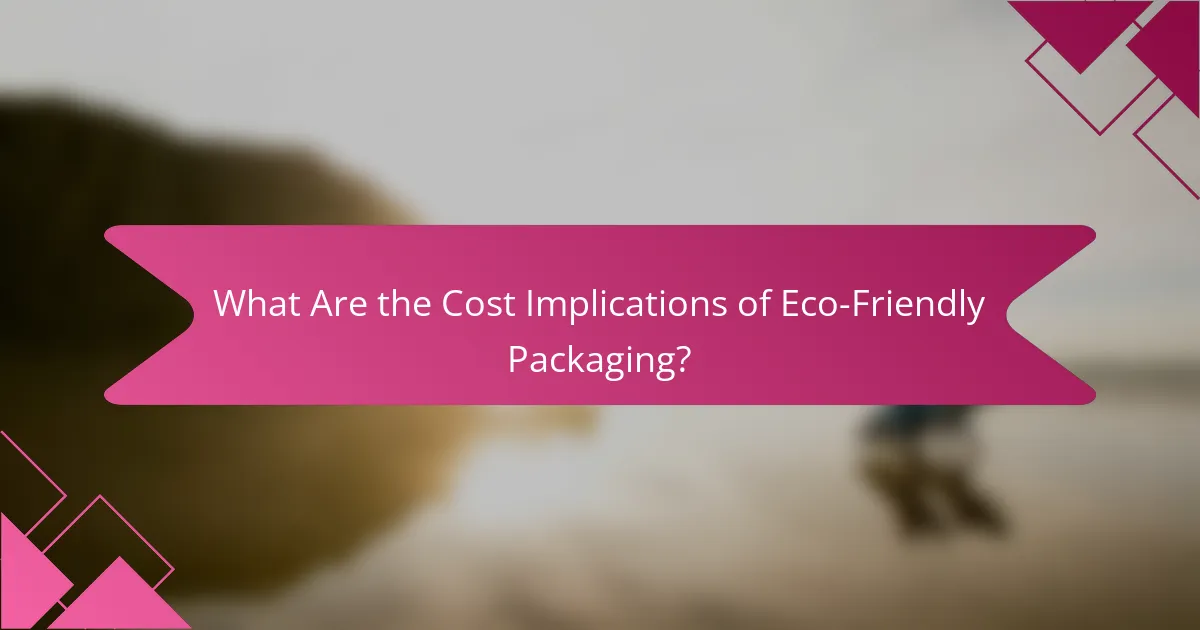
What Are the Cost Implications of Eco-Friendly Packaging?
Eco-friendly packaging often involves higher initial costs but can lead to significant long-term savings and benefits. Small businesses should weigh these costs against potential savings and revenue increases from adopting sustainable practices.
Initial Investment vs. Long-Term Savings
The initial investment in eco-friendly packaging materials can be higher than traditional options, often due to sourcing and production processes. However, businesses can save on waste disposal costs and potentially benefit from lower shipping expenses due to lighter materials.
Over time, these savings can accumulate, making eco-friendly packaging a financially viable option. Companies should consider the total cost of ownership rather than just upfront expenses.
Cost Comparison with Traditional Packaging
When comparing eco-friendly packaging to traditional materials, it’s essential to evaluate not only the price per unit but also the environmental impact. While traditional packaging may seem cheaper at first glance, hidden costs such as environmental fines or customer backlash can add up.
For example, biodegradable materials might cost 10-30% more upfront, but they can reduce waste management fees and enhance brand reputation, leading to a more loyal customer base.
Potential for Increased Sales
Adopting eco-friendly packaging can attract environmentally conscious consumers, potentially increasing sales. Many customers are willing to pay a premium for products that align with their values, which can offset higher packaging costs.
Additionally, businesses that promote their sustainable practices often see improved brand loyalty and customer engagement, translating into repeat purchases and positive word-of-mouth marketing.
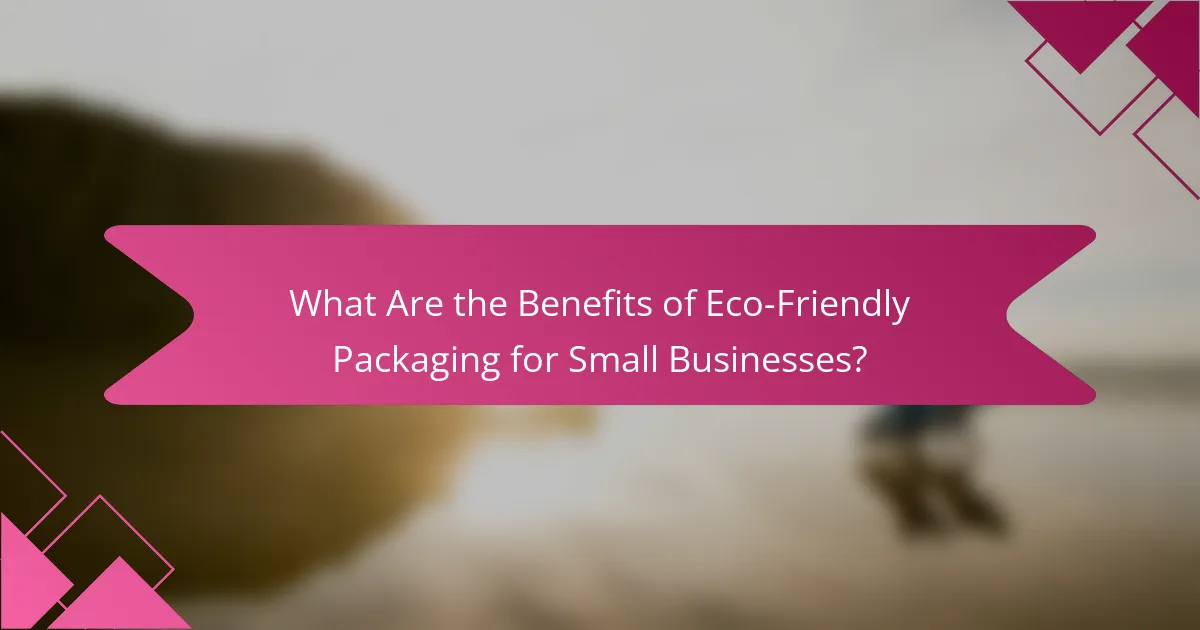
What Are the Benefits of Eco-Friendly Packaging for Small Businesses?
Eco-friendly packaging offers small businesses numerous advantages, including enhanced brand reputation, increased customer loyalty, and compliance with environmental regulations. By adopting sustainable practices, businesses can attract environmentally conscious consumers and differentiate themselves in a competitive market.
Enhanced Brand Image
Utilizing eco-friendly packaging can significantly improve a small business’s brand image. Customers are increasingly drawn to companies that demonstrate a commitment to sustainability, which can lead to positive perceptions and increased visibility.
For instance, brands that use biodegradable materials or recycled packaging often highlight these choices in their marketing, reinforcing their eco-conscious identity. This not only attracts new customers but can also encourage repeat business from those who value sustainability.
Customer Loyalty and Trust
Eco-friendly packaging fosters customer loyalty and trust, as consumers are more likely to support brands that align with their values. When customers see that a business prioritizes the environment, they are more inclined to develop a long-term relationship with that brand.
Offering transparent information about sourcing and sustainability practices can further enhance trust. For example, sharing details about the materials used and their environmental impact can reassure customers that their choices are making a difference.
Compliance with Regulations
Many regions are implementing stricter regulations regarding packaging waste and sustainability. Small businesses that adopt eco-friendly packaging can ensure compliance with these laws, avoiding potential fines and penalties.
Being proactive about sustainability not only helps in meeting current regulations but also prepares businesses for future changes. For example, in the European Union, regulations are increasingly favoring recyclable and compostable packaging, making it essential for businesses to adapt early.
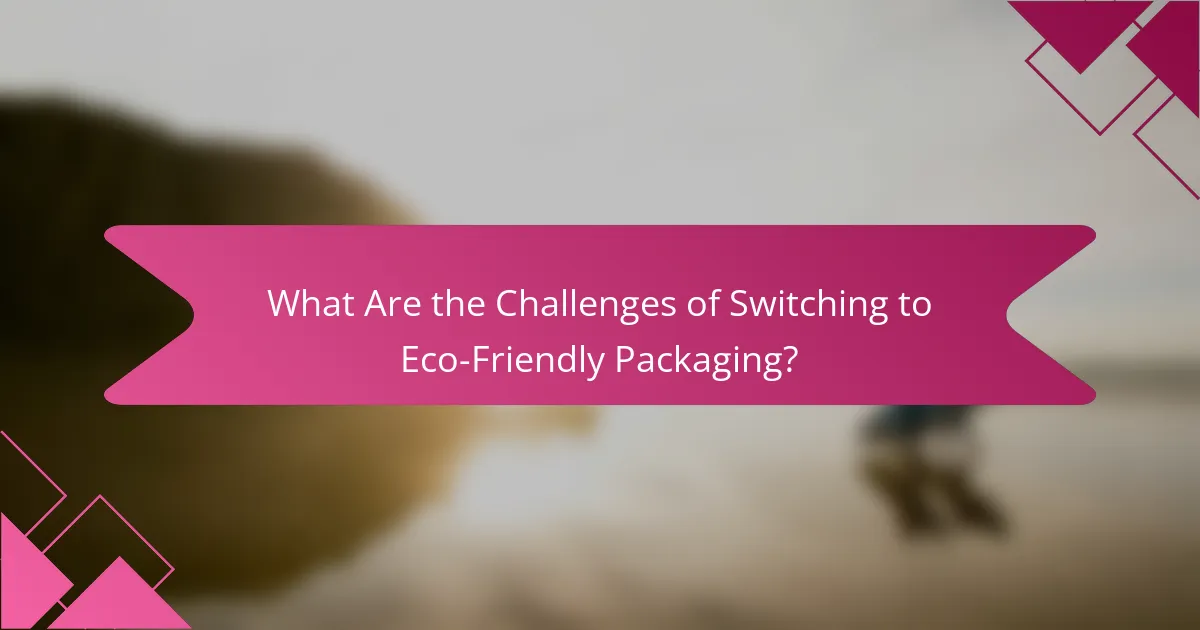
What Are the Challenges of Switching to Eco-Friendly Packaging?
Switching to eco-friendly packaging presents several challenges for small businesses, including higher costs, limited availability, and potential changes in consumer perception. Understanding these challenges is crucial for making informed decisions that align with sustainability goals.
Higher Initial Costs
One of the primary challenges small businesses face when adopting eco-friendly packaging is the higher initial costs associated with these materials. Sustainable options, such as biodegradable plastics or recycled paper, often come at a premium compared to traditional packaging solutions.
For instance, while conventional plastic bags may cost a few cents each, eco-friendly alternatives can range from 10 to 30 cents per bag. This price difference can strain budgets, especially for startups or small enterprises with tight margins.
To mitigate these costs, businesses can consider bulk purchasing or exploring local suppliers who may offer competitive pricing. Additionally, emphasizing the long-term benefits of eco-friendly packaging, such as enhanced brand loyalty and reduced environmental impact, can help justify the initial investment.
